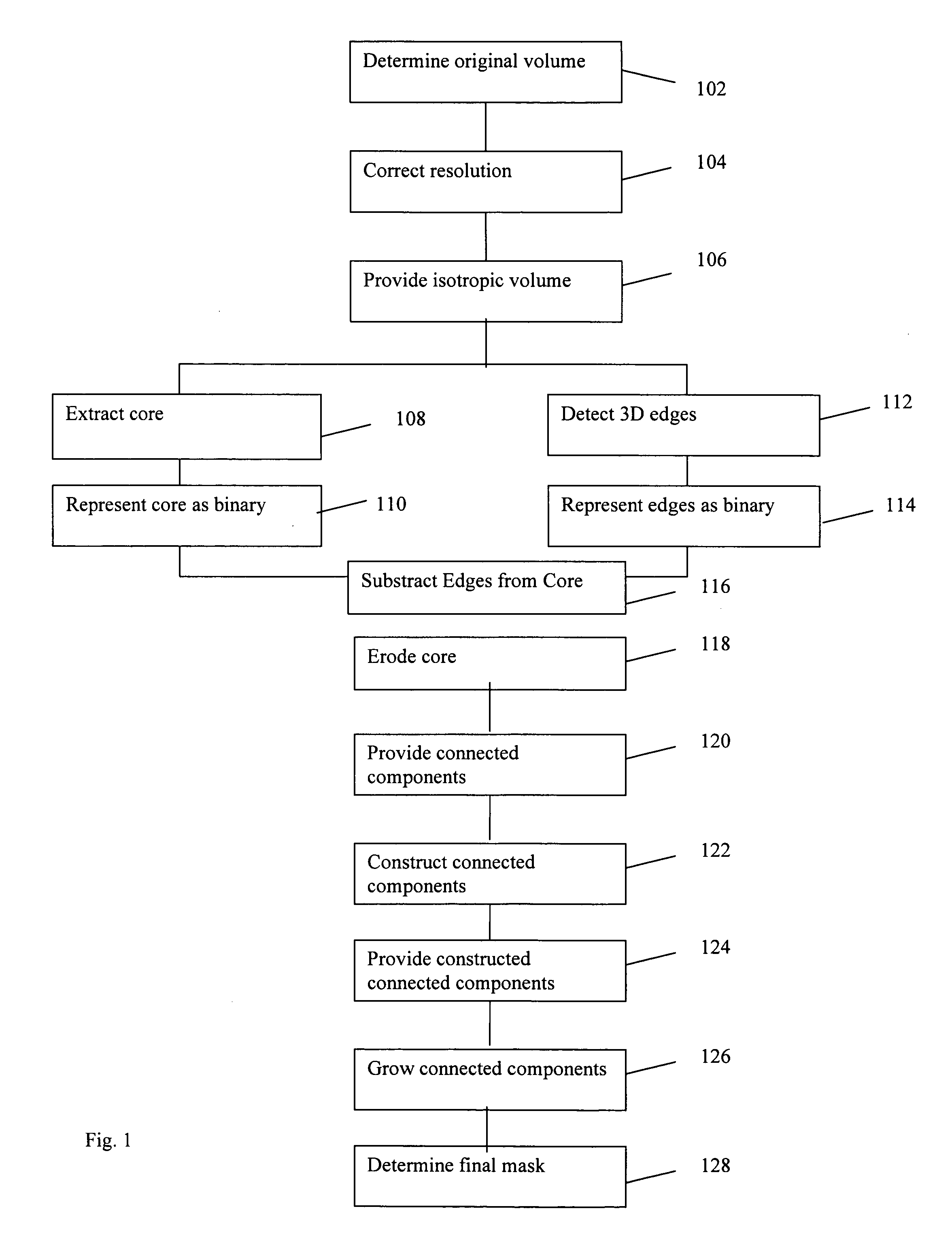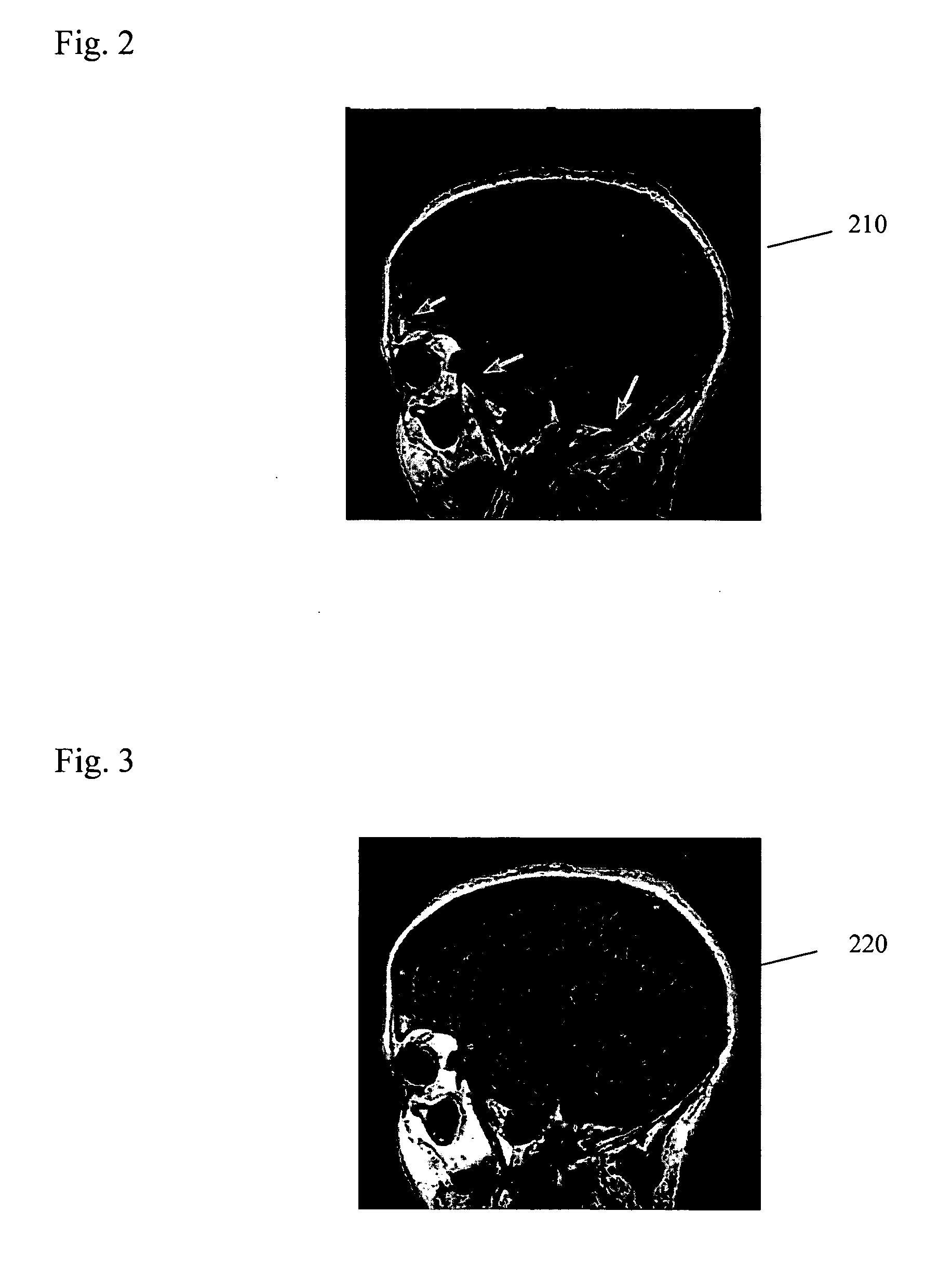System, software arrangement and method for segmenting an image
a software arrangement and image technology, applied in image enhancement, medical/anatomical pattern recognition, instruments, etc., can solve the problems of low accuracy of bse approach, low accuracy of conventional approach, and general poor precision of bse approach, so as to simplify the access to individual labels, reduce the amount of data to be accessed, and improve the effect of image quality
- Summary
- Abstract
- Description
- Claims
- Application Information
AI Technical Summary
Benefits of technology
Problems solved by technology
Method used
Image
Examples
Embodiment Construction
[0045]FIG. 1 depicts a flow diagram of an exemplary segmentation procedure in accordance with one exemplary embodiment of the present invention. Such segmentation can use attenuation, 3-dimensional connectivity and presences of edges to separate one anatomical body from another. For example, in step 102, 3-dimensional volumetric data of the head or another anatomical part (e.g., the colon) may be represented as a 3D voxel array using conventional MRI techniques so as to obtain an image, as it is know in the art. The voxels may be comprised of 16-bit data segments (but may be used for any bit depth). In step 104, the image obtained in step 102 may be resampled to make the voxels isotropic, e.g., thereby correcting the image. Isotropy refers to the resolution of the modified volume that can be identical or substantially similar along each of the X, Y, and Z axes. One of the purposes of step 104 is to improve the behavior of subsequent erosion and growth operations (as discussed herein...
PUM
 Login to View More
Login to View More Abstract
Description
Claims
Application Information
 Login to View More
Login to View More - R&D
- Intellectual Property
- Life Sciences
- Materials
- Tech Scout
- Unparalleled Data Quality
- Higher Quality Content
- 60% Fewer Hallucinations
Browse by: Latest US Patents, China's latest patents, Technical Efficacy Thesaurus, Application Domain, Technology Topic, Popular Technical Reports.
© 2025 PatSnap. All rights reserved.Legal|Privacy policy|Modern Slavery Act Transparency Statement|Sitemap|About US| Contact US: help@patsnap.com



